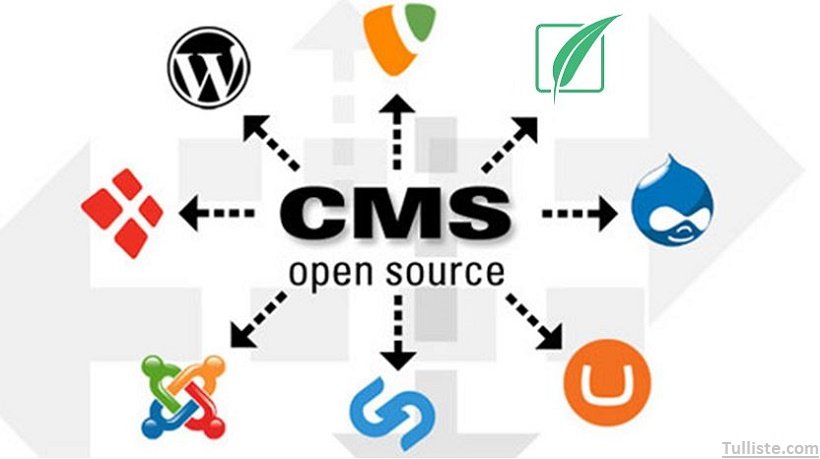Overwhelmed with the daunting task of choosing the right CMS for your website? Countless businesses grapple with this crucial decision, unsure of where to turn. But here’s the harsh reality: settling for the wrong CMS can spell disaster for your online presence. Imagine investing time and resources into a platform that doesn’t meet your needs, only to face endless frustrations and setbacks.
But fear not. In this comprehensive guide, we will unveil the 5 best CMS systems that are tailor-made to elevate your website game. Whether you’re a budding entrepreneur or an established Australian web design company, finding your perfect CMS match is within reach.
First things first —
CMS vs. Website Builder
If you prefer an all-in-one solution for website building and hosting, a website builder is the way to go. It allows you to purchase a custom domain, tailor your site’s appearance, and incorporate advanced multimedia elements like animations and scroll effects. While you focus on design and content, the hosting platform handles maintenance, security, backups, and more.
However, this convenience comes at the cost of flexibility, as website builders lack two crucial features that CMS platforms possess:
- Extensive content management features
- Customisation options
Therefore, according to expert web design companies in Australia, website builders are ideal for individuals or businesses aiming to swiftly develop visually appealing websites, such as agencies, artists, or restaurants. However, for those seeking advanced features and greater customisation, a CMS is the better choice.
Now you can decide which is suitable for your needs — Website builder or CMS?
How To Choose The Right CMS?
If you have decided on using a CMS, expert web design companies in Australia refine their selection based on five criteria.
- Ease of Use: The CMS should be user-friendly for all team members, from content creators to developers, facilitating seamless workflows.
- Customisability: Look for a CMS that offers a balance between ease of use and customization options, allowing scalability as your business grows.
- Security: Choose a platform with robust security features and protocols to safeguard your content and users.
- Pricing: Consider a CMS that aligns with your budget while offering scalable plans to accommodate your business growth.
- Prevalence in the Market: Assess the success of other brands using the CMS, as it can indicate the platform’s suitability and scalability for your business.

Types of CMS Platforms
Platforms such as WordPress and Joomla are already quite popular in the web design world, so we will cover the other less-popular yet incredible options Australian web design companies use.
Let’s start with –
1. Webflow
Webflow stands out as a visual content management system tailored for web designers seeking control without the hassle of hosting, security, or performance concerns. Perfect for skilled designers and marketers, it offers complete design autonomy and robust security features like AWS Shield protection and SSL certification.
Moreover, its customisability is unparalleled, with over 150 templates and full styling control, including the ability to create reusable elements. It also ensures site security with two-factor authentication, role-based permissions, and continuous monitoring.
2. ContentStack
Contentstack offers a headless web content management system ideal for enterprises aiming to streamline content delivery across diverse digital channels. Tailored for large enterprises with ample developer resources, it boasts enterprise-level capabilities with complete control over content types, programming languages, and integrations.
While it presents a steep learning curve for non-developers, including content managers, its rich text editor and scheduling tools facilitate content creation and management. Also, its customisability is extensive, allowing developers to craft content models for optimal display on various devices and integrate them seamlessly with preferred technologies.
3. Storyblok
Australian web design companies often suggest Storyblok to developers and marketers for its versatility, which extends to building corporate websites, e-commerce platforms, mobile apps, and more. That is why it is a go-to solution for content managers and marketers.
Offering unparalleled ease of use, it combines modern headless architecture with visual editing tools tailored to marketers’ needs. With customisable content blocks and advanced localisation features, Storyblok facilitates content delivery across multiple countries, languages, and device types. Hosted on AWS, it prioritises security with measures like web application firewalls and daily backups.
4. TYPO3
TYPO3 stands out as an open-source CMS tailored for enterprise-level websites, ideal for developers or teams with substantial technical resources. Despite its robust functionality out of the box, encompassing over 9,000 features, TYPO3 presents a steep learning curve even for advanced users.
Customisation is possible through integration with over 6,000 third-party tools from the TYPO3 Extension Repository. Security features, regular updates, and compliance tools are provided, but upgrades and maintenance tasks fall on-site owners.
5. PrestaShop
PrestaShop occupies a niche in the e-commerce CMS market, making it ideal for shop owners with some technical know-how. Offering over 6,000 add-on modules and themes, it strikes a balance between ease of use and functionality.
However, getting started on PrestaShop requires technical setup and hosting, which is in contrast to Shopify’s simplicity. The platform boasts extensive out-of-the-box features, facilitating customisation for large online stores.
Final Word
Whether you opt for a versatile platform like Storyblok, an enterprise-focused solution like TYPO3, or an e-commerce-centric CMS like PrestaShop, thorough research is key to success. So, if confused, make sure to get professional help to decide.
Make My Website is a reputed Australian web design company. Reach out to its experts for guidance.


